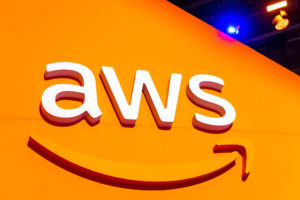AWS is rolling out a new machine learning-powered supply chain planning solution that it claims will give customers greater insight into the current and future states of their inventory. AWS Supply Chain, which will work with data from customers’ existing ERP, supply chain execution, and warehouse management systems, is currently in preview in the AWS cloud.
Amazon.com knows a thing or two about supply chains. What started as a small online bookselling operation in 1994 has morphed into one of the largest logistics operations on the planet, with more than 1 million workers, 1,130 warehouses, and 100,000+ delivery vans (maybe you’ve heard of it).
In addition to building the physical infrastructure to move massive amounts of goods, the ecommerce giant has also developed sophisticated software to bring greater intelligence and efficiency to its operations. It uses machine learning and AI to anticipate what its customers will order, and thanks to optimized pre-placement of goods across its fulfillment centers, it can often deliver it within hours (maybe you’ve even tried this yourself).
Now AWS is taking some of the learnings from that book side of the house and making them available to any company as a cloud-based solution running in its data centers. AWS Supply Chain, which was announced last week at re:Invent, integrates and analyzes supply chain data from customers’ various systems and then uses machine learning and AI software to deliver what it claims is a better inventory forecast.
“We abstract, analyze, and aggregate data. We’re able to provide value for each of those standalone applications that you might have in your network of solutions, and then we harmonize data across all of that, which is something that is very unique,” says Diego Pantoja-Navajas, vice president of new products for AWS Business Applications.
“So we’re taking away the under-appreciated heavy lifting that our customers have to go through, being able to integrate data across all those different and disparate solutions,” he continues during an interview in Las Vegas last week. “We really are able to bring all that data that is standing in silos all together so our customers can get much better visibility of the global supply chain.”
Much of the data that AWS Supply Chain acts on comes from electronic data interchange (EDI) messages originating from a variety of customers back-office applications. EDI–which was originally spearheaded by Walmart in the 1980s to streamline the exchange of order, receipt, and shipping information among manufacturers, distributors, and the Arkansas retailer–may be relatively crude by today’s technology standards but it’s widely implemented and reliable. However, many implementations are unique because the EDI fields must be manually mapped back into companies’ ERP systems, which are often customized. That creates more work to ensure consistency when EDI messages are interchanged.
AWS Supply Chain uses AI to hammer those EDI messages into consistent context, according to Pantoja-Navajas. “We have used machine learning and also natural language processing to get those EDIs and move them and translate into a canonical data model,” he says.
Data from the EDI messages and another industry standard message called an advanced shipping notice (ASN) will be used to calculate vendor lead times and for tracing the arrival or inventory off trucks, Pantoja-Navajas says. This insight will be very handy for companies that are using omni-channel fulfillment, where delivery to the warehouse is bypassed in favor of shipping directly to a store.
“We can give you vendor lead times and calculate those vendor lead times using machine learning,” he says. “That’s something that’s very relevant, especially when…customers, especially in CPG [consumer processed goods] and others, will receive product directly to a store, or will receive product directly to locations where it doesn’t have to go to a warehouse, or it’s coming directly from a vendor.”
The new offering can automatically generate insights about potential supply chain risks, such as overstock or stock out conditions. The cloud-based software presents the findings in a “real-time visual map,” the company says. Customers can also integrate outside data, such as weather data, into the mix, which will help users to be better prepared for events that could impact supply and demand.
Users–including inventory managers and demand planners–can also create their own “insight watchlists” by selecting the location, type of risk they want to look out for, such as stockouts or overstock situations. When a threshold is reached, the users are notified. The offering also generates recommended actions based on variables such as the amount of risk involved, the distance between facilities, or the amount of CO2 required to moved goods between them.
There’s also a demand planning element to AWS Supply Chain. The solution uses machine learning to analyze historical sales data in context with real-time data, and create new forecasts that better align with real-world conditions.
While AWS Supply Chain may borrow from some of the algorithms used by Amazon.com, no supply or demand data that customers load into AWS Supply Chain will be shared with Amzon.com, Pantoja-Navajas says. Customers data remains safely in their S3 buckets, he says.
For more information, see aws.amazon.com/aws-supply-chain/features/.
Related Items:
How Point-of-Interest Data Can Alleviate Supply Chain Pains and Help Rebuild Economies
Google Cloud Attacks Supply Chain Crisis with Digital Twin
Reliable Supply Chain Data Hard to Come By
The post Inside AWS’s New Supply Chain Planning Offering appeared first on Datanami.



0 Commentaires